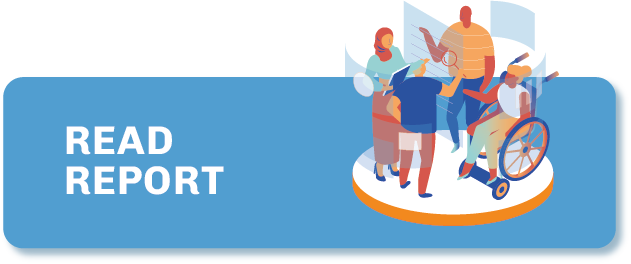North Macedonia
The online media market in North Macedonia is rapidly developing. Over the past few years, online media organisations have progressively captured the attention of the public, offering written, audio and video content. It is easy to establish such outlets in North Macedonia, but funding presents a key challenge. Many of the media organisations interviewed for Project Oasis have very small newsrooms (around up to 10 people), and depend either on donor funds or on advertising. Others, which are recognised as independent by the public, find themselves unable to have a large influence in the market due to a lack of stable funding.
GENERAL INFORMATION
Press
freedom
ranking
Internet
penetration
POPULATION
Media organisations
in the Directory
TYPE OF COVERAGE

TYPE OF ORGANISATION

GENDER OF FOUNDERS

Press freedom
Press freedom in North Macedonia has improved greatly in comparison to about 10 years ago, when the imprisonment of journalist Tomislav Kezarovski drew attention to media rights in the country. According to Reporters Without Borders’ latest Press Freedom Index, North Macedonia has climbed 33 places since 2021 and 59 places since 2013 (when it ranked 116). According to statistical data from the Association of Journalists of Macedonia, back in 2017 there were 12 cases of attacks on journalists and media workers, while in 2022, at least four attacks have been registered.
The country has appointed a prosecutor who will be in charge of following cases where journalists are involved as witnesses or are attacked or reported. In addition, the number of lawsuits on the basis of defamation and insult has decreased since the country’s decriminalisation of defamation and insult in 2012, according to the report Indicators for the Degree of Freedom of the Media and Safety of Journalists 2021 by the Association of Journalists of Macedonia. Nevertheless, online attacks on women journalists in particular – which are often gender-based – remain frequent, notes the Association of Journalists of Macedonia in a recent survey on attacks on journalists and media workers from 2017 to 2021.
Market structure and dominance
The media market in North Macedonia is fragmented, with one national broadcaster and several private TV stations and private radio stations on the one hand and, on the other, more than 150 online media outlets which are not regulated by law. The large number of online media organisations is due to the fact that the online sphere is not regulated; anyone can establish an online media outlet.
Over the past five years, the number of broadcasters in North Macedonia has been reduced by 24; from 134 broadcasters to 110. Television is still the media platform that is most present in people’s everyday lives, but internet penetration is increasing, notes a report by the country’s Agency for Audio and Audiovisual Media Services on the influence of new media in shaping public opinion. Digital media is increasingly becoming the main source of information for people, providing speed of information.
How media is funded
National broadcaster Macedonian Radio Television is funded mainly through state funds and, to a smaller extent, through advertising, while the commercial radio and TV stations basically rely on advertising, according to market analysis from the Agency for Audio and Audiovisual Media Services.
This is the case too for some – but not all – of the country’s online media outlets, some of which, having been established by non-governmental organisations, survive exclusively thanks to grants. Revenue streams in the online sector are in constant and speedy growth, despite advertising in the traditional media sector falling, notes the Agency for Audio and Audiovisual Media Services in its report.
Twelve profiles of digital native media organisations from North Macedonia are included in the directory. Most of them were established in the past 10 years.
In some cases, these organisations came about as a response towards a perceived need for professional media and objective information, as in the case of the Center for Investigative Journalism SCOOP-Macedonia, an online media outlet focused on supporting investigative journalism, as well as the Investigative Reporting Lab Macedonia, which focuses on covering international and domestic organised crime and corruption.
Others came about as a response to a need for more local content with national significance, as was the case with the local online media organisation DUMA.mk, as well as KumanovoNews, which started by covering local stories and then grew to become a regional and national media outlet.
All of these media outlets depend on either advertising or grants. Some organisations, such as Vidivaka.mk, which was established in 2016, focus on visualised news stories and publish mainly on social platforms. One of the organisation’s founders, Mite Kuzevski, explains:
“We took over a step that was maybe risky at that moment, because people might not have recognised us as media because of that, but over a period of a little more than a year Vidivaka.mk has become a recognisable, credible media [outlet] with around 135,000 followers overall on its social channels.”
Notably, online media outlets in North Macedonia are becoming dominant in the traditional media landscape. Even though some of these media outlets started online, with basic websites and a small staff, they are now moving towards new platforms and formats such as podcasts, TikTok and other forms of media expression in order to share their content in new forms and grab the public’s attention in doing so. Video is the most popular format among audiences. In terms of content, coverage that reveals systemic failures and corruption in society attracts audiences the most.
Online media outlets in North Macedonia are in need of long-term financial support in order to produce professional content. The current economic situation gives them few possibilities to produce qualitative journalism content. If these outlets were given more financial support, the media space in North Macedonia would be vastly different and more sustainable.
Last updated: December 2022
CREDIT FOR STATISTICS: Press Freedom statistics, RSF Press Freedom Index 2022; Internet penetration and population statistics, from Internet World Stats

